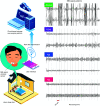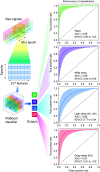Machine Learning-based Sleep Staging in Patients with Sleep Apnea Using a Single Mandibular Movement Signal
- PMID: 34297641
- PMCID: PMC8759305
- DOI: 10.1164/rccm.202103-0680LE
Machine Learning-based Sleep Staging in Patients with Sleep Apnea Using a Single Mandibular Movement Signal
Figures


References
-
- Martinot JB, Borel JC, Cuthbert V, Guénard HJP, Denison S, Silkoff PE, et al. Mandibular position and movements: Suitability for diagnosis of sleep apnoea. Respirology . 2017;22:567–574. - PubMed
Publication types
MeSH terms
LinkOut - more resources
Full Text Sources
Other Literature Sources
Medical

